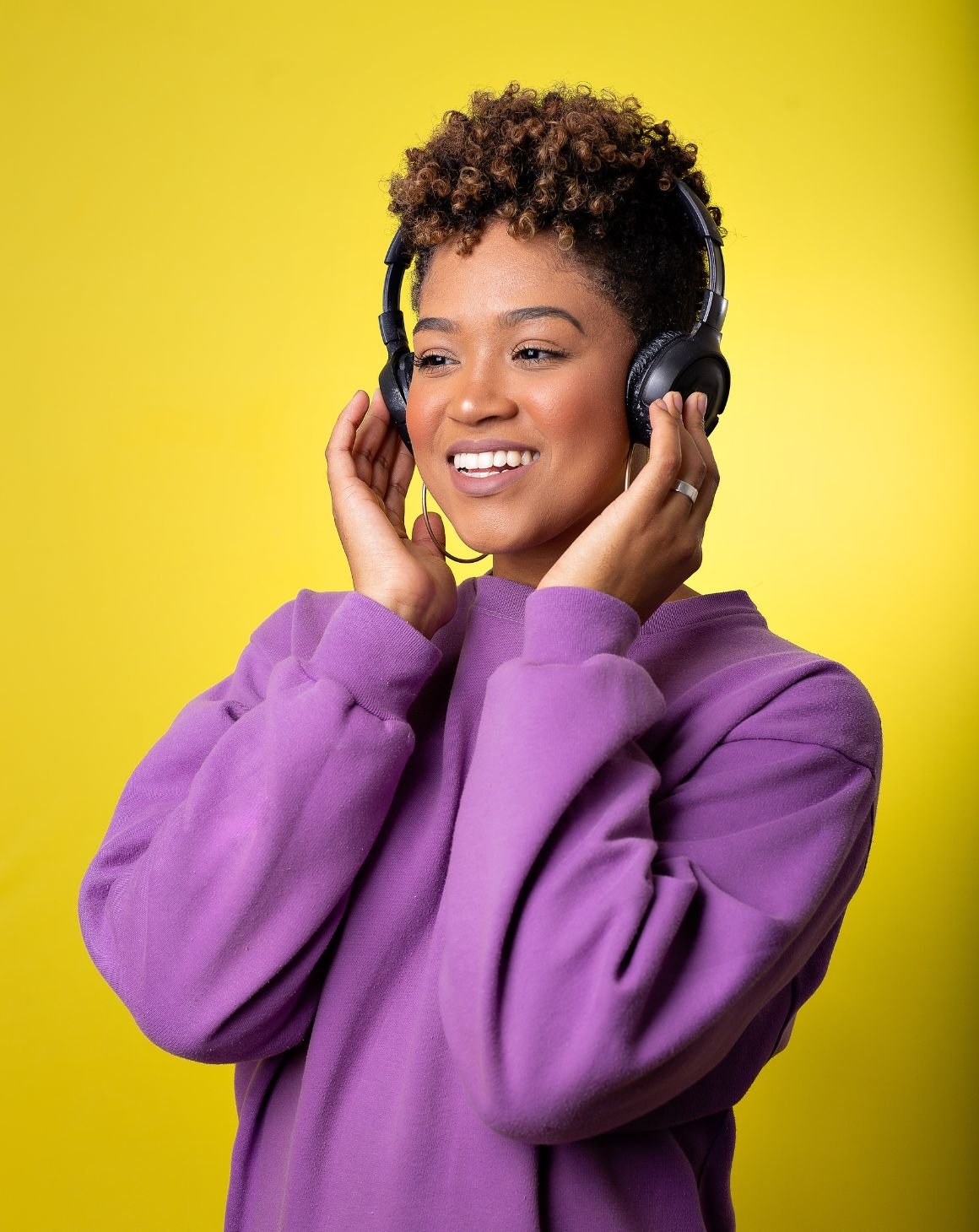Nearly everyone has had a conversation about how our phones are listening to us and then targeting us with ads for correlated products. We’re not Tim Cook or Mark Zuckerberg, so we can’t confirm that your phone isn’t listening to you, but we can confirm that the reason you see so many ads that are perfect for you is because of great social media advertising.
From choosing the right audience to customizing campaigns to fit your place in the customer journey, advertisers around the world have perfected the art of targeting.
If you’re a business owner, you’re probably wanting to get in on this action, if you haven’t already. By investing in social media advertising, you can get your products in front of people who are primed to buy them — or you can prime them to buy from you.
There is an art to social media advertising, which is why not everyone is successful at it. Countless brands have wasted spend on unsuccessful campaigns, leaving a sour taste in their mouth. But, with the right strategy and knowledge, you can run successful ads that will help you reach your larger business goals.
Whether you’re advertising on Facebook, Instagram, Snapchat, TikTok, YouTube, or Pinterest, you’ll need to follow some basic principles and best practices for social media advertising. Once you understand how to structure your ad campaigns in platform, you’ll better be able to track your (hopefully stellar) results!
The team at Blue Wheel has compiled a social media advertising 2021 guide to help you reach your goals — whether you’re looking to gain more customers, decrease cart abandonment, increase revenue, or launch new products.
Social Media Advertising Goals
Before you ever start running paid ads, you need to set goals for your social media advertising. Not only will this help you gauge the success of your campaigns once they reach their end, but it will also help you figure out what types of ads, audiences, creative, and copy you should be writing. Setting goals is the key to success.
Grow Sales
When you ask any brand what their goal is for their social media advertising, they’ll usually say something like “increase sales'' or “grow revenue.” These are certainly notable goals, and social media advertising can help you achieve them. For this goal, you would want to track ROAS.
Increase New Users to Site
Emerging brands or startups typically want to increase new users to their site to gain more new customers. Likewise, established brands will want these goals too as they seek to continue to grow their brand and expand to new audiences. You should track clickthrough rate for this goal.
Decrease Abandoned Carts
If your business is seeing lots of people adding items to their cart but never completing their purchase, you likely want to decrease the number of abandoned carts. Email marketing is often used to address this, but social media advertising can help with retargeting campaigns with a similar message. ROAS should be tracked for this goal as well.
Launch New Products
Social media advertising can be used to build hype around a product launch. By strategically advertising your new products to potential and existing customers, you can increase your email list by advertising to get on the waitlist, and then advertise the product once it’s launched. ROAS would be tracked here as well.
Social Media Advertising Platforms
There are a plethora of social media advertising platforms to choose from. The goals you have set will inform which platform you will advertise on.
Channel diversification is extremely important, especially once you start seeing good consistent results on your Facebook and Instagram ads. We’ll talk more about this later, but it’s important to have a good understanding of each of the platforms first!
Facebook is arguably the most popular social media advertising platform — with nearly 2.85 billion active users in early 2021, it’s the social platform with the most users. And, it’s also the platform with the most evenly distributed age range. Hootsuite research shows that all age groups are fairly even. This makes sense, as Facebook is one of the oldest social media platforms, so it’s had time to initiate older (50+ years old) users. (Source: Hootsuite Digital 2020)
With the largest user base and the greatest age diversification, Facebook is a great advertising option for a variety of brands, no matter your target demographic.
On Facebook, there are a variety of ad types to choose from:
- Image
- Carousel
- Video
- Collection
Your ads have the option to be featured in feed, on the sidebar, in Messenger, or in Facebook Stories. Your campaign’s overarching goals will help you determine which type of content and ad placement is best for your goals. Rigorously testing always helps too!
Instagram, which is owned by Facebook, is another popular social media platform. Currently, there are over 1 billion active users on Instagram.
Instagram’s age distribution is more uneven than Facebook — fewer older and younger people use it. The largest age demographic is 25–34-year-olds, tapering off as you get older. Gen Z uses Instagram less than their Millennial counterparts, as they opt for newer social platforms.
Instagram ads can be placed in-feed or in stories. In-feed advertisements can utilize any of the post formats available to Instagram posts — single images, 60-second videos, or a carousel of up to 10 videos or images. Instagram is also now rolling out ads for Reels.
Influencer content is a large part of Instagram, and it serves as a form of social media advertising today. (We’ll get more into that later.)
TikTok
Advertising on TikTok is a relatively new concept for many advertisers, but this social media platform has absolutely blown up among Gen Z — and it hasn’t stopped growing as Millennials flock to the platform as well. TikTok grew over 233% in 2020 during the global pandemic when new users joined for the entertaining short-form video content.
TikTok’s “For You Page” algorithm is famous for being scarily accurate and showing you content that is incredibly niche. Ideally, then, that same concept could be applied to their advertising audiences, allowing for ultra-specific targeting.
Influencer marketing is also becoming incredibly popular on the app, as creators of all sizes are featuring sponsored products in their videos.
YouTube
YouTube advertising is a slightly different form of social media advertising, as ads do not appear in a feed as they do on other platforms. Instead, ads are short videos that appear before or during a video.
Ads can be skippable (after 5 seconds) or unskippable, forcing users to watch the entirety of the ad before their video starts. Content creators on the site can also allow ad breaks within their video, where an ad plays before the video resumes playing.
YouTube pays creators who have ads before their videos, but only if users watch the whole ad (hence unskippable ads) or interact with the ad in some way (e.g., clicking). YouTube has also famously not featured advertisements before some big creators’ videos due to their non-family-friendly content and copyrighted music.
Pinterest advertising is, according to the site, “the only platform where ads are additive. Because people come to find ideas, they’re more open to ads and content from brands on Pinterest, compared to other platforms.” Theoretically, this should mean more natural ad placements and better conversion rates.
We’ve had great success with Pinterest advertising for our beauty clients, likely for this very reason. The users on Pinterest are looking for inspiration already, so integrating your brand into that story is a natural way of advertising.
Snapchat
Advertising on Snapchat, another social platform with a younger audience overall, can be incredibly successful if done right. Ads appear in between watching people’s stories, as well as watching publishers’ content on the app.
Geofilters and lenses can also be used for advertising purposes, although it’s a slightly different format. Geofilters appear when you’re in a specific location (using GPS technology), and lenses can be used from anywhere.
Channel Diversification
When you are just starting your social media advertising efforts, you likely will focus on Facebook and Instagram advertising. These platforms are the most widely used and have robust advertising technology behind them, so they’re great for scaling your efforts.
However, as you grow your social media advertising, you’ll likely want to branch out to other channels. Channel diversification is incredibly important for a few reasons.
Grow Your Audience
First, channel diversification expands the pool for your audience. Depending on the channel, you can reach a new type of audience. Platforms like Snapchat and TikTok have a traditionally younger audience base, with many of those younger users not being fully active on those more traditional platforms. Pinterest can be great to expand your audience in a more integrated way since Pinterest is idea-focused.
So, depending on your desired audience, diversifying the platforms you advertise on might be a great idea. Not only can you reach a different audience, but you can also show ads to the same people across multiple platforms to stay top of mind.
Combat Tracking Updates
In early 2021, Apple announced they would be rolling out some updates to their operating software that would affect advertising across Facebook, Instagram, and more.
When the update rolled out, many brands saw a decrease in the delivery and effectiveness of their ads, since they were getting delivered to fewer people. Costs, such as CPMs, also increased with this update. The team at Blue Wheel implemented a robust Pinterest advertising strategy that saw great success for one of our beauty brands — over 1M impressions.
Social Media Advertising Campaigns
One mistake that many novice advertisers make is to just create an ad in platform without an optimized campaign structure. Social media advertising should be created to move users further down the funnel until they become a customer; there’s a very nuanced way to set up ads that will feel natural and convert customers.
Awareness/Prospecting
Awareness campaigns, also called prospecting campaigns, are used to scale a brand’s advertising and gain new customers. These campaigns are more expensive because you are advertising to people who likely have no idea who your brand is, so they’re not as primed to buy as existing customers or people who have engaged with your brand. However, with a robust strategy, you can nurture these prospects and turn them into lifetime customers!
Typically, you would choose your advertising audience based on lookalike audiences, which are automatically generated by the platform. These audiences are composed of people whose purchase intent matches your current customers — they’re primed to buy a product just like yours! They’re interested in similar products and have similar demographics.
Retargeting
Retargeting campaigns are used in conjunction with prospecting campaigns as well as anyone who has recently visited your site. Retargeting campaigns can address abandoned carts with “Forgot Something?” messaging to remind users they still have items in their cart, but they can also be used to offer a discount code to first-time buyers. (e.g., “Check out and get 15% off with code COMEBACK”)
This type of campaign usually has a high ROAS, as the users you’re serving ads to are already interested in your products. These campaigns typically return a lot of revenue for brands, allowing you to expand your prospecting campaigns to reach a wider audience and then retarget them to purchase.
Social Commerce
Social commerce is a huge buzzword in 2021 — and for good reason. This new avenue on social media can be useful for social media advertising but is also great for your organic social strategy. There’s a lot to unpack, so let’s dive in!
Overview
Social commerce is, at its very core, a way to monetize social media. With the rise of influencers advertising products, brands selling their goods, and swipe-up links being the only way to link to a product page, it’s only natural that social commerce would make an appearance eventually.
Social commerce allows brands (and now some influencers) to tag products in their photos. When a user clicks the tag, they are taken to the brand’s shop, where they have the option to view more details, add to cart, or buy now.
This is different from how brands previously handled the monetization of their Instagram — many used swipe-up links in stories, which would take the user to the brand’s website to purchase within the Instagram app (not opening a browser). The other option was to include a link in your bio to shop products, which similarly takes users into an in-app browser experience.
Social commerce keeps the entire shopping experience inside Instagram, rather than opening a browser window within the app. Keeping this experience in-app allows brands to more accurately track conversions from their social media, a traditionally hard metric to quantify.
Impact
The impact of social commerce has been immense for brands, even though it might seem small! Being able to track the success of posts, stories, and advertisements on social media is a game-changer for brands (and agencies) looking to quantify their social efforts.
For advertising on social media, traditional attribution and tracking work. But with changes to the Apple operating system impacting the success of campaigns, social commerce avoids that by allowing brands to track purchases in their Instagram store, rather than tracking users’ progress outside of the app.
What We Saw in 2020
Emarketer estimates that social commerce buyers grew 25.2% in 2020 to 80.1 million. The pandemic certainly escalated purchases online, as buyers opted for online shopping versus brick-and-mortar stores. And, as users spent more time on social media, advertising skyrocketed and allowed for social commerce to take hold of users’ daily use. 30% of people say that they would make a purchase on a social platform, proving that social commerce is already becoming a mainstream avenue of making purchases online.
What We’ll See in 2021
Social commerce is estimated to grow another 12.9% to 90.4 million users in 2021, according to Emarketer. This exponential growth is a sign of a larger trend in the social media space — that it will continue to be monetized by the platforms.
This number of users will only continue to increase year over year as more brands invest in social commerce and begin to see tangible returns from their efforts on the platforms. Reaching new audiences and making purchases easier will lead to more conversion and sales.
What You Should Do
Get in on social commerce ASAP! If you’re selling online, you need to be selling on social platforms.
Here are a few tips for finding success on social commerce. If you’re interested in learning more, check out our blog post on 4 social commerce tips for 2021.
- Launch products specifically on social commerce (not on your dotcom)
- Don’t input your whole catalog — only import your best-selling or most popular items
- Tie to influencer marketing
Integrating this with your social advertising strategy can be a huge benefit as well. Because social commerce provides you with a robust amount of data, you can easily begin to see the tangible effects of your social media advertising efforts, as well as the specific habits of shoppers. You can test our promotions on a specific group of people, or offer discounts for those who buy on social commerce.
Integrating social commerce into your entire social media advertising strategy and larger business goals will allow you to get your customers used to buying through social apps, and provide another avenue for you to gain new customers as the ease for buying just gets easier!
Factors for Conversion
Many factors affect your ad’s conversion rate. From your copy to your CTA, to the image to the ad format, everything has an impact on your overall conversion.
A/B testing is an important part of social media advertising. But be sure you only test one item at a time. Testing each of these options independently allows you to determine which components are working and which aren’t.
Copy
The copy on your advertisements is vitally important for conversion. Using language that aligns with your customer’s pain points, goals, and desires will help you convert more customers, showing them how your product will help them or improve their life.
Using varied copy for different audiences is critically important. Each audience has a unique perspective, so be sure you workshop each of your audiences to truly understand them. Creating buyer personas can be especially helpful here.
Imagery
The imagery you use in your social media ads is instrumental to the success of your campaigns. We’ll get into this more in-depth in the next section, but suffice to say that you should probably not just reuse your e-commerce shoots for advertising. It’s important to have thumb-stopping creative—images that stand out and make the user stop scrolling and notice your ad.
There are a lot of best practices for imagery, including:
- Product details/shots
- Diversity
- Variety of types (static, GIF, video, etc.)
Like any element, testing what imagery works for your audience is critical. By understanding your audience’s intent and desires, you’ll better be able to create imagery that aligns with them.
CTA
You might not think that a few little words at the bottom of your ad would make a difference in conversion, but any marketer will tell you that CTA text can make or break an ad! How many times have you seen “Learn more” or “Buy now”? Probably a lot! That’s not to say those CTAs are bad—they certainly have their place—but being creative yet clear with your CTA copy can be a great way to make your brand stand out.
Think about your brand voice and how you might provide a variation of “Buy now” in a way that’s true to your brand. If your brand is fun and energetic, you might say something like “Shop the drop.” But if you are focused on sustainability, your CTA might be “Shop recyclable skincare.” Be sure to test your CTAs as well!
Ad Type
The actual type of ad you choose is important as well. There are usually four basic ad types:
- Image
- Carousel
- Video
- Collection
These ads can vary in success, depending on the content you choose. And you might find that different ad types work better at different points in the funnel or customer journey! For example, a video ad detailing your brand might work well at the prospecting stage, then you follow it up with a static image for your best-selling product, then retarget with a carousel of products they viewed on your website.
Be sure to test different ad types in addition to the rest of your content. It might seem like a large investment to create a video just for social media advertising, but the returns could definitely be worth it!
Social Media Advertising Content
The content that you use in your social media advertising is incredibly important for conversion. As we stated earlier, the creative you use in your ads—whether static images, GIFs, or videos—can drastically impact your customers as they go further down the funnel.
Here at Blue Wheel, we’ve coined the term conversion creative, which is our philosophy (and service) that highlights the importance of high-quality creative that is made especially and just for advertising. Reusing your e-commerce website’s images isn’t enough anymore—you need to invest in creative assets that are specifically designed to convert viewers.
The Importance of Dedicated Advertising Content
If you’re currently reusing your e-commerce or organic social creative for your advertising, your ads are likely not as performing as well as they could! Reusing those assets is certainly cost effective, but it’s not the best long-term solution. In order to scale your advertising efforts to be successful, you need to create dedicated content for your ads.
Conversion Creative
Blue Wheel coined the term conversion creative to describe the type of content we create specifically for advertising. This content is specifically designed to convert users, driving them down the sales funnel.
Different creative is used at different stages in the customer journey in order to convert viewers. Whether you’re trying to educate about your product, show the benefits, or catch someone’s eye, conversion creative can help you achieve your goal.
Types of Visual Content
UGC
User-generated content, or UGC, is extremely popular to use in advertising. This form of content resonates with users, as it is relatable and less “professional.” Plus, many social media users get excited to see their favorite influencer featured on a brand’s page!
Some people utilize the content they receive from influencers for their UGC advertising, while others use content they were tagged in on Instagram. (Glossier often does this with the high-quality content they are tagged in.) Whatever you decide to do, you’ll want to be sure that the images fit your brand and are high-quality — you don’t need to share content you don’t like!
Reviews
Text-based images can be controversial on social media advertising, but featuring short reviews in text form can be a great way to highlight what consumers love about your product. You can feature one especially glowing review or have multiple reviews flash on the screen to show how beloved your product is by many! You can also consider featuring copy that shows how many 5-star reviews your product has — which conveys how much people love it!
Influencer
Utilizing influencer content is a great way to recycle content that has already been created. This minimizes the amount of time spent on content creation — just be sure you have permission from the creator to use the image in advertising. As we’ve stated before, influencer content can convert really well, as users recognize their favorite content creators.
Model Shots
Model shots are a more traditional form of advertising. No matter your product, you can utilize models to showcase your product. As you select models for your social media advertising, it’s important to keep your target market in mind, but also highlight diversity in your casting. Having a photo shoot with professional models specifically for your advertising is a large part of conversion creative.
Video
Using videos in your advertising is a great choice, especially at the top of the funnel. Videos can be used to inform consumers about your brand from a more general perspective — letting them know your brand’s mission, products, and more. In addition, videos can be used to showcase how to use your product further down the funnel to convert viewers.
GIFs
GIFs can be used for more than just reactions! This moving picture file format is a great option for social media advertising. Creating animations that showcase your product in a fun way is one way to utilize GIFs in your advertising. Even just having text appear and disappear in a loop can be a simple way to incorporate GIFs.
Copy
The copy in your social media advertising is critically important for moving people down the funnel, and ultimately for converting them into customers. Your copy should be clear, easy to read and understand, and concise. While some brands swear by long-form copy (multiple paragraphs) for their ads, the general rule of thumb is to keep it short and only write a sentence or two of copy.
The description or caption of your advertisement is important on several levels. First, it can show off your brand’s personality. Whether your business is fun or more serious, your copy is really where your brand voice can shine. Second, your description informs viewers of your product in a clear and concise way. Lastly, your copy will ideally push viewers to convert and purchase your advertised product.
CTAs
As mentioned earlier, your CTAs are also important for each step of your advertising campaign. Your brand’s voice also has an opportunity to shine here, whether you choose to be clear or a little quirkier.
In the awareness phase of your full-funnel campaigns, a simple “Learn More” CTA might do the trick. As you move further down the funnel, your CTAs should become likewise more conversion focused, such as “Buy Now” or “Shop the Collection.” Your CTA should directly correlate with the goals of each step of your campaign.
Social Media Advertising Metrics
Strategizing, writing, and setting up your social media advertising campaigns is just the first step. After your campaigns have been running for a while, you can start to monitor your metrics to measure the effectiveness of your campaigns. Hopefully, before you launched your campaigns, you set goals that can help you gauge how well your ads performed.
Depending on what stage of the funnel your advertisement is in, you’ll likely be looking for a different metric. Let’s walk through each metric, from Awareness to Conversion.
Video Completion Rate
If you’re using videos in your social media advertising, as recommended earlier, you’ll likely want to track your video completion rate to gauge the success of your campaign. Videos are often used in the awareness stage of campaigns, showing off your brand’s overall purpose and products.
In this stage, you rarely see conversions — maybe just a few outliers who are primed to purchase. So, rather than tracking ROAS, you should track video completion rate, which monitors how much of a video viewers watched. A higher video completion rate means that viewers watched a higher amount of your video ad.
You can even retarget viewers based on how much of the video they watched. So, if they only watched less than 10 seconds, you could retarget them with an ad that continues to inform them about your brand. But, if they watched the full 60-second ad, they’re already informed about your brand, and you can start retargeting them with more specific ads that are designed to convert.
Clickthrough Rate
Clickthrough rate is a metric that many people track in this middle stage of the funnel to monitor interest in your product or service. While this might not result in a conversion at this stage, clickthrough rate does usually indicate that you at least piqued the viewer’s interest.
After this stage, you can further retarget people who abandoned their cart on your site or viewed a specific product but did not purchase. Then you can retarget them with ads that include products they viewed to further drive them down the funnel towards conversion.
ROAS
If you’re looking for a stat that is a great place to start for assessing your social media advertising, it would be ROAS (return on ad spend). This stat reflects the amount of money you made from ads divided by the money you spent on ads.
A higher ROAS means you had higher revenue. For example, if you have a 1 ROAS, you made exactly what you spent on advertising, breaking even on your efforts. But a 14 ROAS means you made 14 times more money than you spent — which would be incredible, obviously!
Influencer Marketing as Social Media Advertising
We’d be remiss if we didn’t talk about influencer marketing as a form of social media advertising. While it’s not technically formal advertising, it certainly falls into the general category of advertising, as you are still spending money to promote your products.
Influencer marketing, at its core, involves paying a content creator on Instagram to promote your products on their social platform of choice, which in turn allows your product to be seen by all of their followers!
We here at Blue Wheel use Grin to keep track of our influencer marketing efforts. We’ve also cracked the code on how to monetize and track your return on this relatively new form of marketing. One of the main points of influencer marketing from a brand’s perspective is that it’s hard to track the return from just a single post. But, by using ongoing promo codes for each influencer you work with, you encourage them to become brand ambassadors and promote your products outside of your contracted post or story.
Influencer marketing is certainly booming, and it’s definitely one you should keep an eye on! There are influencers in almost every industry, from fashion to home improvement, so you
Wrapping It All Up
Hopefully after reading this (extensive) piece on social media advertising, you feel more prepared to start or improve your own advertising efforts. There’s certainly a lot to tackle, so just take it step by step.
Some brands choose to keep their social media advertising in house, while others outsource it to a marketing agency. Whatever you decide, it’s important to make sure you set goals, set up your campaigns correctly, and monitor your results. With this base knowledge, you’ll be on your way to successfully implementing a social media advertising strategy!
Reach out to Blue Wheel — our advertising team are experts at social media advertising. We’ve helped countless brands implement new advertising strategies to convert users into customers.

%2520(1).png)





.png)
.png)
